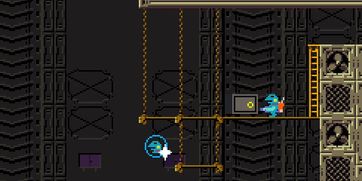Introduction:
Suspend fishing is a highly effective technique that allows anglers to present their bait or lure at a specific depth in the water column, often resulting in more targeted catches. Whether you're targeting trout, bass, or other species, understanding how to suspend a hook is crucial for success. In this article, we'll delve into the basics of suspend fishing, provide a step-by-step guide, and include illustrations to help you visualize the process.
Understanding Suspend Fishing:
Suspend fishing involves using a rig that keeps your bait or lure at a stationary position in the water column. This technique is particularly useful in clear water conditions where fish are less likely to strike a moving bait. By keeping your offering still, you can trigger strikes from fish that are actively feeding but not interested in chasing prey.
Essential Equipment:
Before you start, ensure you have the following equipment:
- A quality fishing rod and reel suitable for your target species.
- Monofilament, fluorocarbon, or braid line in the appropriate weight and color.
- A hook that matches the size and type of bait you plan to use.
- A sinker or weight to keep your bait at the desired depth.
- A swivel or leader to prevent line twist.
- A float or bobber to indicate when a fish bites.
Step-by-Step Guide to Suspend Fishing:
Choose the Right Hook: Select a hook that is appropriate for the size and type of bait you plan to use. A lighter hook is often preferred for suspend fishing as it allows your bait to move more naturally.
Attach the Leader: Thread your line through the eye of the hook and then through a swivel or leader. This helps prevent line twist and allows for a more natural presentation.
Add the Weight: Attach a sinker or weight to the line above the swivel or leader. The weight should be enough to keep your bait at the desired depth but not so heavy that it pulls your bait down too quickly.
Adjust the Float: Attach a float or bobber to the line above the sinker. The float should be adjusted so that it is just above the desired depth where you want your bait to suspend.
Cast Your Line: Cast your line out into the water, allowing the weight to sink and the float to rise to the correct position. The float should be stable and not moving erratically.
Adjust as Necessary: If the float is moving too much or not at the desired depth, adjust the weight or float accordingly. The goal is to have the float remain as still as possible.

Wait and Watch: Once your rig is set, wait for a bite. If the float suddenly moves or dips, it could indicate a fish has taken your bait. Gently set the hook by raising the rod tip slightly.
Illustrations:
To help you visualize the process, here are some step-by-step illustrations:
[Insert illustration 1: Attaching the leader and weight] [Insert illustration 2: Adjusting the float to the desired depth] [Insert illustration 3: Casting the line and allowing the weight to sink] [Insert illustration 4: The float remains stable, indicating a successful setup]
Conclusion:
Suspend fishing is a versatile and effective technique that can be used in various fishing scenarios. By following these steps and using the provided illustrations, you'll be well on your way to mastering this technique. Remember, practice makes perfect, so don't be afraid to experiment with different rigs and depths to find what works best for your target species. Happy fishing!












